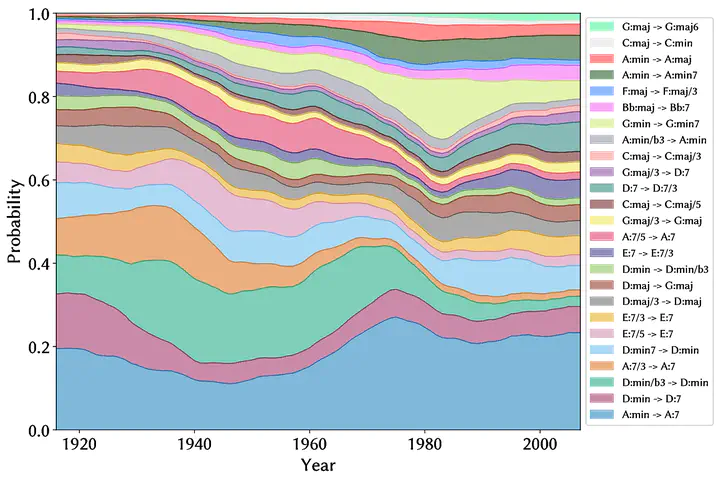Modeling the Evolution of Harmony in Popular Music from Different Cultural Contexts

Abstract
Popular music often features a high amount of stable harmonic patterns, which facilitates the establishment of stylistic idioms and recognizability, and the changing frequencies of such patterns are closely linked to style and genre: new patterns arise while others die out. Here, we employ a content-based transmission model from cultural evolution research and compare three 20th-century popular music genres from different geographical and cultural contexts. Prior work on the evolution of harmony often only considers a small vocabulary of chords with a binary distance metric (same or different). Here, we introduce music-theoretically sensible notions of harmonic distance between chords, that allows us to arrive at more fine-grained results regarding relative influences of different kinds of harmonic relations on diachronic changes. Inferring the substitution probabilities for different chord classes, our results indicate an increasing usage of chord categories, whereas chord extensions remain relatively stable. Our study provides a principled methodology for cross-cultural research on the evolution of harmony.